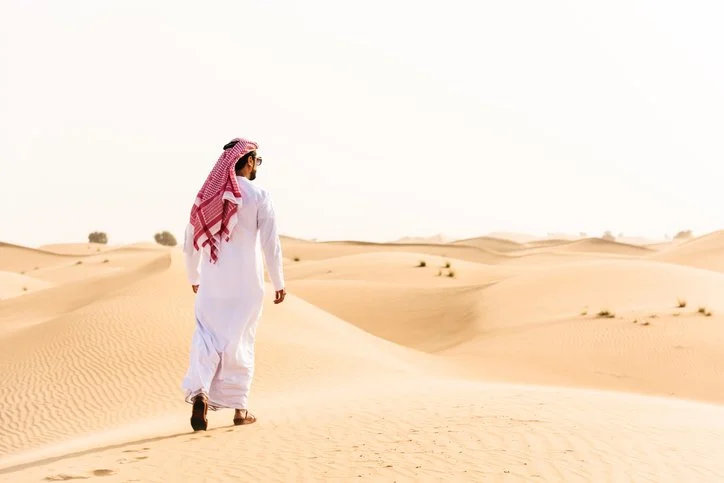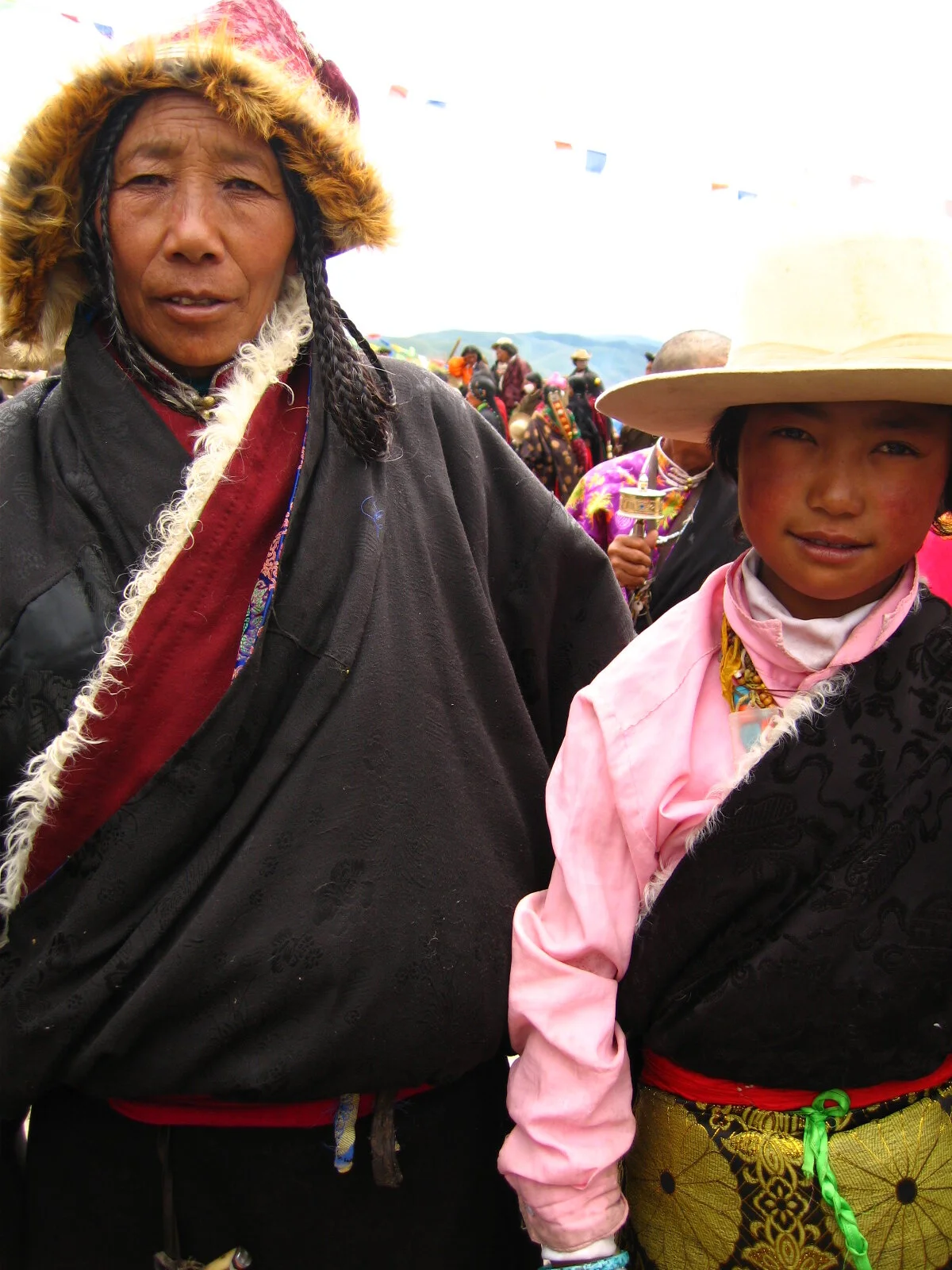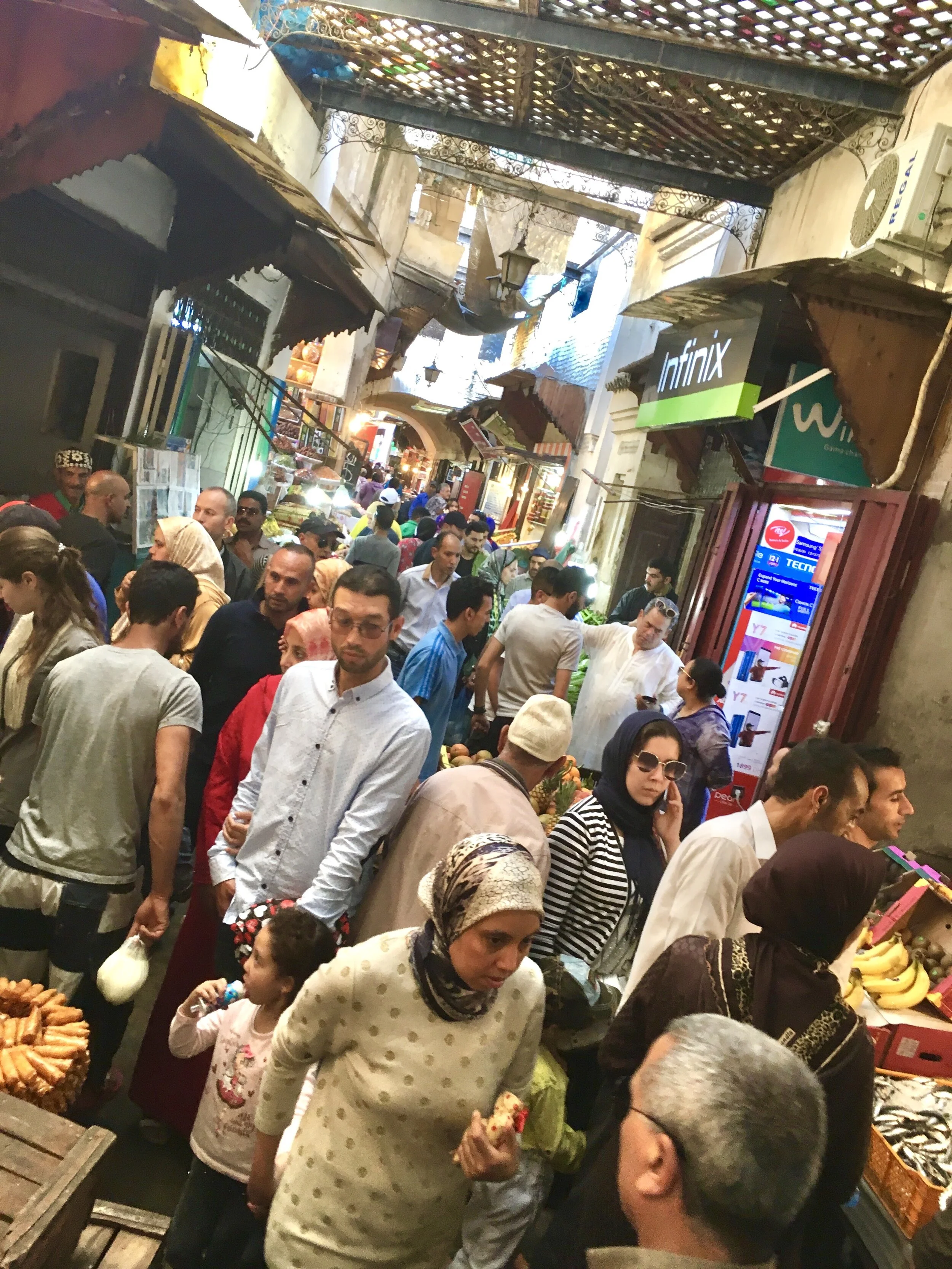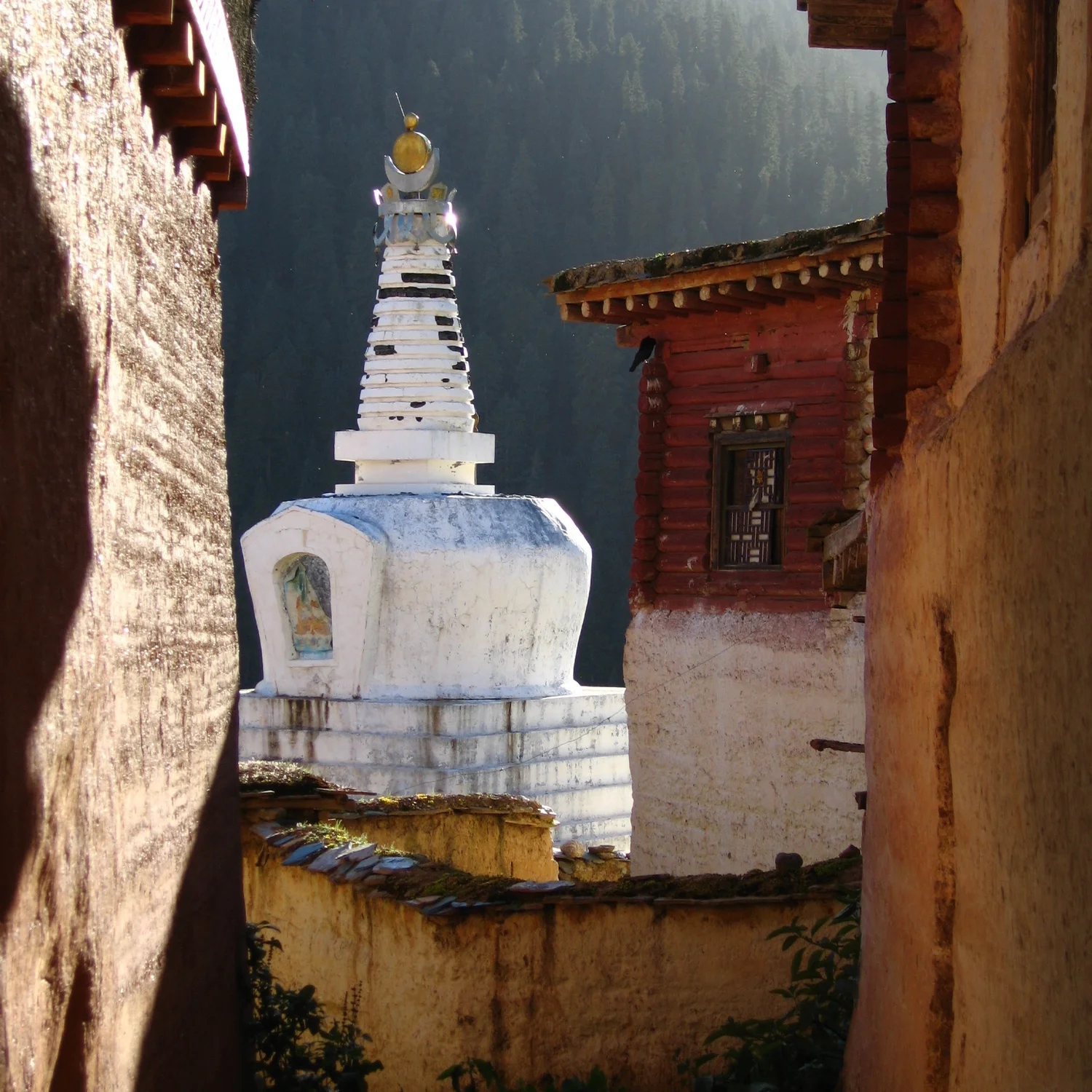Pamela Blair traveled to Tunisia to experience the beauty of the desert. What she didn't expect was a young camel herder who, when he found she was a psychologist, insisted she help him with a problem. He took her out to a dune, and their session began.
All in exotic travel
Into the Jungle
A visit to Calakmul Biosphere Reserve, a cultural and natural UNESCO World Heritage Site in Mexico’s Yucatán Peninsula, takes Carolyn Handler Miller deep into the Maya jungle where she discovers a vibrant ancient culture living intimately with their environment.
Where The Enlightened Ones Are
Chris Pady was skeptical that enlightened beings walked the earth; that was until the day an enlightened being flicked him on the forehead and forever changed his mind.
Leaving Fez, Biting Our Nails
Making plans in Fez for a last-minute Sahara excursion during Ramadan proved to be a bit of a gamble for retired American Michael Papas. As he handed over a stack of cash, he wondered if he was being foolish or if trusting a stranger in a foreign land would pay off.
Sitting on Buddha's Head
It was 1976 and Mike Chambers was in Afghanistan on his way to see a standing Buddha that had been carved out of the walls of a canyon some fourteen hundred years earlier. Not long afterward, Afghanistan slipped back into the chaos it was to suffer for decades. and the experience had faded into memory until, 25-years later when Bamiyan's Buddha appeared in a TV news post.
Turkish Timber
It was 1976 and Mike Chambers was traveling overland on the Hippie Trail across Eurasia. During a stop in Turkey, tempers flared when a fellow traveler insulted a local vendor and suddenly, in the resulting scuffle, Mike became the target of an angry mob.
Trekking Into The Stone Age
A trekking adventure in West Papua, formerly known as Irian Jaya, a place where some people still hunt their food with bows and arrows, challenges preconceptions and produces unexpected insights for intrepid traveler Barbara Brown Allen.
Kismet On A Tunisian Dune
Was it destiny when Pamela Blair, a psychologist on holiday in Tunisia, met a heartbroken camel herder seeking advice from a stranger?
A Foodie's Iran: 2 Authentic Recipes You Can Make Right Now
by Paul Ross
Warned not to go, I followed my appetite to Iran and have returned home filled with beautiful memories, blessed with new friends, and brimming with the desire to show and tell, taste and smell, and surprise all those who never expected to see me again.
Road Kill
Mageru pulls over to the side of the road, parks and idles the Land Cruiser. We are still a few hours away from arriving back in Addis Ababa. He looks over to me, pats the steering wheel and says “I am a little tired. You can drive.”
This does not strike me as a generosity I should accept. Although I am confident in Canada, Ethiopian driving doesn’t exactly rev my engines. “Oh…I don’t think so, honey. The driving here is very different from my experience back home.”
Making History at Frommer’s
by Edie Jarolim
It is 10am and I am sitting in a tiny mid-Manhattan office, contemplating penis sheathes. I'm not talking about the latex variety, though my fantasies of spontaneous, sweep-the-papers-off-your-desk sex always end with concern about sexually transmitted disease.
The Trek to Little Potala Palace
by Chris Pady
While visiting the town of Derge (rhymes with reggae) in eastern Tibet, my partner, Michele, and I learn of Palpung, the area’s largest and most important Kagyupa (White) sect monastery, locally known as the “Little Potala Palace”.
Yet despite Palpung’s reputation, we have no luck hiring a guide through any of the town’s hotel staff, shopkeepers, or restaurant owners. Finally, we bump into an English-speaking monk who promises to arrange everything for us. “Meet here at 7 o’clock tomorrow morning”, he instructs, pointing to a designated spot. Nothing about the arrangement spells certainty, yet we’ve got nothing to lose.
The Sacrifice Pole Grab Festival
by Chris Pady
I balance perilously on my teammate's shoulders, wondering what to do next. The crowd below me grows impatient. I would love nothing more than to wipe the beads of nagging sweat scurrying down my face in mini rivers, but my hands are covered in greasy grime. The cacophony of blaring music and people screaming is so loud that I can barely hear myself think.
The Little Burmese Tout in Training
I was an easy target, strolling happily towards the temple outside
As a seasoned traveler, I’d seen my share of touts. Overly
I learned long ago to avoid eye contact. Keep walking. Say nothing to encourage them. But from the moment my plane touched down in Burma, I felt no need for such guardedness.
Unkempt little bodies jump from stone to stone. Lithe and agile. Darting now towards, then away from the never-ending stream of tourists flowing over the raised wooden causeways of Beng Mealea. They claim the messy jumble of unrestored stones of this temple, 40 kilometres east of Angkor, on the ancient royal way, as their playground. Nearly nine centuries of heat and humidity have played havoc with the precise placement of the blue sandstone blocks. Gone is the former wealth and glory of the mighty Khmer Empire. In its place poverty reigns.
At each consecutive temple I visit they keep buzzing around me in swarms. Irritating little mosquitoes. Sometimes noisy and persistent, other times quiet and watchful. Even if I try, I cannot seem to avoid their persistent onslaught. “Lady! Lady!” Dirty little hands push tacky souvenirs I don’t want in my direction. I am determined not to make eye contact. I don’t want to see them. “Only one dolla!” I hasten my pace, and keep my face stern. I focus on the beauty and splendour of the temple in front of me. They give up, and turn their attention to their next victim.
Motorcycle Diaries in Vietnam
by Sasha Hill
When I think of Vietnam, I think of the motorcycles.
My travel partner, Sierra, and I marveled at the sea of them, flowing in a colorful mass around the city streets. We zeroed in on individuals: tiny young women in heels, families with three generations along for the ride. What for us was a cultural statement of rebellion, of reckless daring, was for them just a means of transportation. My grandpa had once punctuated his description of my mother’s “wild” young adulthood by recounting a story of how she once rode a motorcycle up the East Coast with a friend. “I bet she never told you that”, he concluded, in dramatic satisfaction. If he could only see the middle aged Vietnamese ladies, demure in their business suits and protective masks.
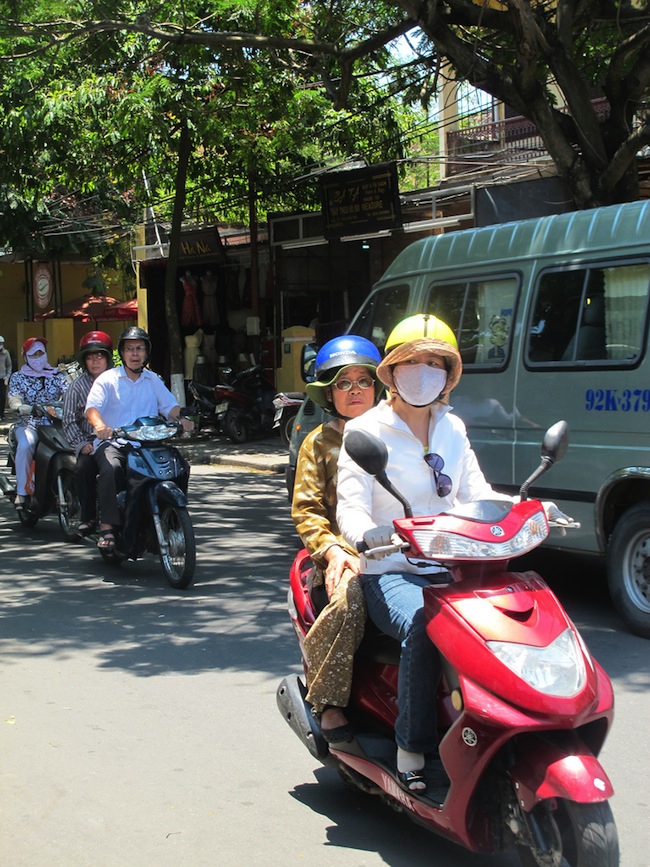
Vietnam was the final stop before we crossed the Pacific to home, after eleven months on the road, from Peru to Asia. We’d brainstormed the trip when we were fourteen, and spent four years planning and saving up.
It was Sierra’s idea to rent the motorcycle. The trip itself was her idea. My role was usually to follow along, checking her only when the ideas got out of hand. Like when she proposed we schlep down from Granada, Spain to Meknes, Morocco a day early on no sleep to make it in time for a Halloween party. Sometimes I regretted my all too responsible reactions. Rent a motorcycle? We had no experience! What if we crashed? And right at the end of our trip.
But I found myself saying yes.
Vietnam’s Ha Long Bay: Surreal Doesn’t Begin To Do It Justice
Descending the steep, narrow plank, inch by inch, hand over hand along the long pole, I thought: “This better be one hell of a cave!” Exploring the other-worldly interior of Hang Trong Cave was to be one of many surreal experiences I was to have traveling along Ha Long Bay in northeast Vietnam.
In the 1992 movie Indochine, credited with putting Ha Long Bay on the map, Catherine Deneuve describes it as “the most remote outpost of Indochina.” Today, the bay still retains that end-of-the-Earth, Lord-of-the-Rings-on–water quality.
Fish and Friendship in Tokyo
by Jules Older
On our last visit to Japan:
- An American businessman told me, “A bunch of hippies got together for three days and took drugs.” He was talking about Woodstock.
- We looked out the window of our ryokan and gazed upon a 13th-century pagoda. On the television in our traditional Japanese room, man was taking the first steps on the moon.
- And our twin daughters were conceived on a futon in Tokyo.
* * *
It was to Tokyo we were returning, decades later. Our friends – Eipan and Hirame, Eiichi and Hiroko – still lived there, and it was way past time to re-une. And we wanted to see the city we’d been so taken with all those years before. How had it changed? How had it not?
When I tell Hirame on the phone that I’m looking for changes, she says, “Expect to see a lot of blonde Japanese.”
I chuckle. “Not your daughters, I bet.” Despite his years as a grad student (and my roommate) in New York, Eipan is very traditional, a samurai businessman with a 6th degree black belt in Judo. I can hear Hirame’s quiet smile all the way from Tokyo. “They’re brown-hair Japanese.”
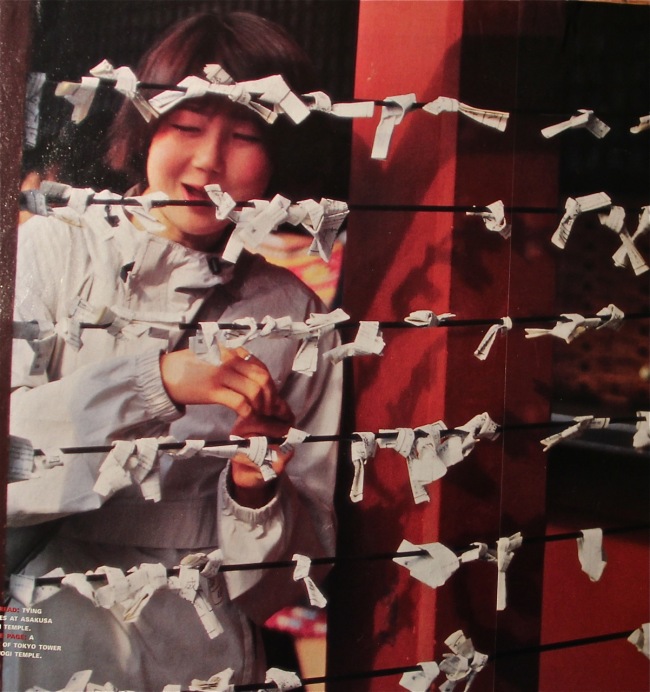
It doesn’t take long to spot other changes, other sames. First stop on the bus trip in from the airport is the La Floret Hotel. As the bus doors open, a young woman in a sharply pressed uniform bows deeply. Score one for the same. On the other hand, where the massive hotel – and dozens like it – now stand, there used to be only small shops. The Tokyo skyline has pushed skyward.
At our friends’ home, there’s a similar mixture. We still take off our shoes at the door, but Hirame greets us with a kiss, not a bow. The ofuru, the ubiquitous Japanese hot tub, still awaits, only now it’s kitted out with bubbles, programmable water jets and digital temperature controls that can be operated from the kitchen.
story and photos by Paul Ross
Getting to Myanmar (Burma) is a trip, but getting around while in-country can be an adventure.
During 18 days of travel, we rode in human-pedaled trishaws, rickety horse-drawn carriages, vintage trains, and boats of every imaginable size, shape and color. Squeezed into crowded truck-busses, we joined indigenous commuters, and used the smattering of Burmese phrases we picked up along the way to interact and become part of their day. In turn, they became part of our memories.
Much more than transportation, these conveyances provided an intimate glimpse of everyday life, a profound sense of place, and an authentic connection to this rapidly changing country.
Traveling with Eldertreks, an adventure travel company for travelers 50 and older, my wife, Judie, and I were able to step outside the tourist bubble and travel with the locals.
Here's the visual proof.
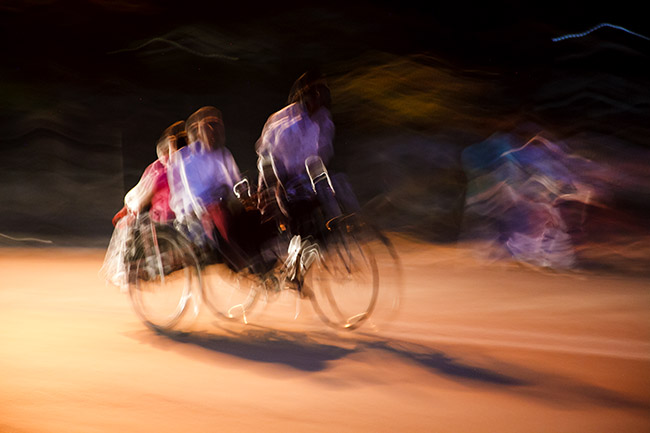
An old converted bicycle, with its five-inch seat not constructed with wide-beamed Americans in mind, and a bumpy dirt road make for a colorful experience, especially if you add in the black and blue marks on your backside. The peddler/driver's friend rode along, balancing on the bike's peg, as either a human GPS or a spare "engine." Far from "the days of Raj" luxury (the Brits colonized Myanmar as well as India), the trishaw is a practical taxi in a bustling, developing country and ––like all taxis everywhere–– it's best to negotiate the fare in advance of the trip. You want to help the local economy but--
A Hitchhiker's Guide to Namibia
The bakkie went over a large pothole and I was jolted awake, the shock making me inhale deeply and sharply. The air was hot. My throat and eyes stung from all the dust. The unbending road ran like a dagger through the heart of the desert. There was nothing else. Just us, the road, the desert, the sky and the burning sun, and the great weight of my hangover forcing itself in on my shriveled, raisin-like brain and lungs. I wondered for a second if we were heading towards the end of the world.
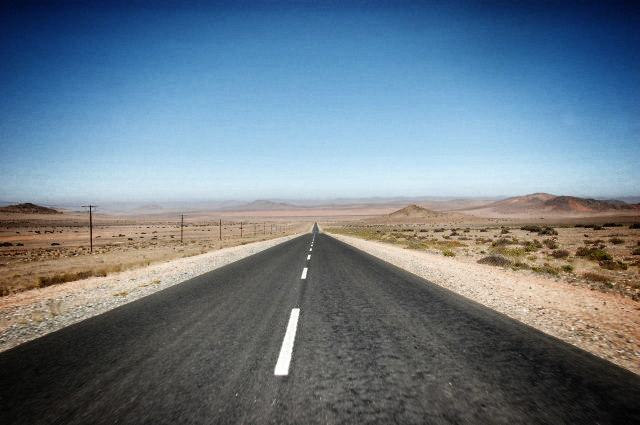
It had all been a terrible accident really. I knew almost nothing about Namibia except that there were a lot of sand dunes, and without a few too many drinks to lubricate the imagination and fire the yearning for adventure, it probably never would have happened. The truth is though, I could probably say the same about a lot of my trips over the years, especially the most interesting ones.
It had all started in what might loosely be called the ‘town’ of Springbok, a little way back across the border. I was there on a job and had confessed my ignorance of Namibia to a local Afrikaans prospector’s son named Rico, who I had got talking to at the local bar. His head was similar in size and shininess to a watermelon, yet still looked disproportionately small for his enormous frame.
Now there I was in the back of his battered old vehicle hurtling northward away from the South African border like a bat out of hell, still not entirely sure where I was headed or why. And good old Watermelon Head was at the helm up in front of me, his equally large wife bumping along in the seat next to him and occasionally barking what I could only imagine were strong Afrikaans expletives at her husband. But still he went bravely on, potholes and abuse or no, taking me ever deeper into the burning heart of the unknown.
